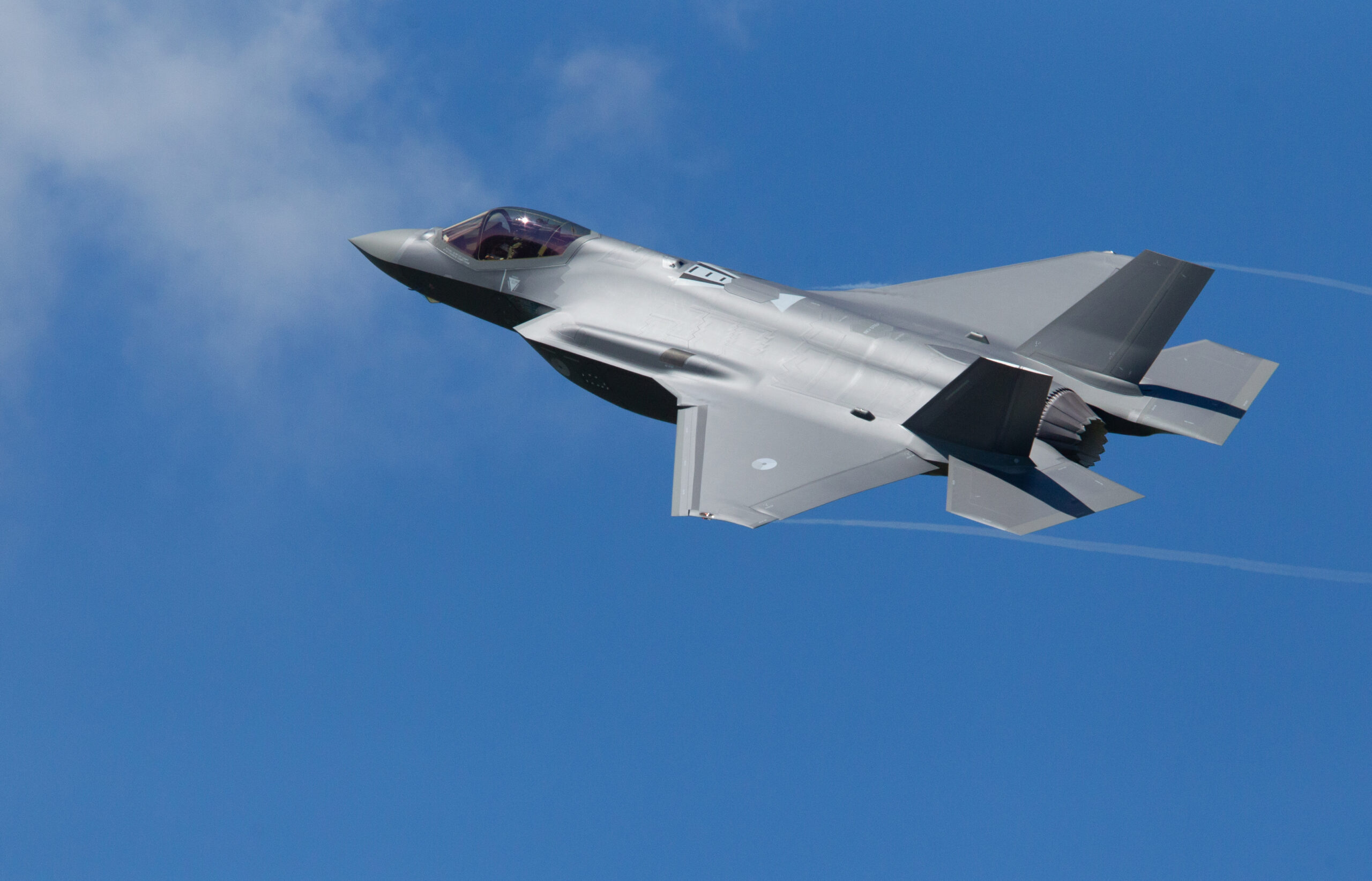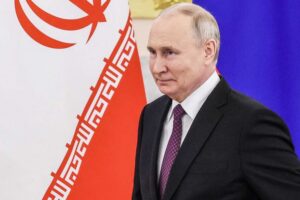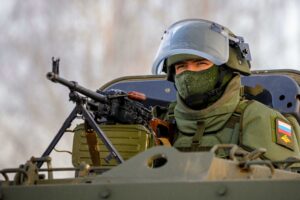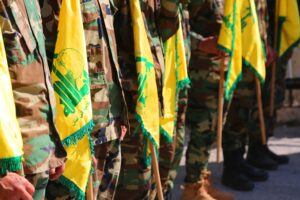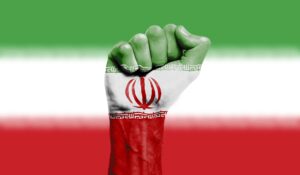The odyssey of the Joint Strike Fighter (JSF) program in the Middle East is a case study in Arab Gulf state military ambitions, defense cooperation with the United States (US), and practicable evaluations of security requirements. It is an object lesson in concentrating on the fundamental priorities of Arab Gulf stability and security and avoiding deviations into tangential issues. The kerfuffle surrounding the current proposed sale of the Joint Strike Fighter (JSF), the Lockheed-Martin F-35 Lightning II, to the United Arab Emirates (UAE) is nothing new; rather, it is just another chapter in a 50-year quest for the perfect weapon system that creates the chimera of security in an ever-shifting, volatile environment. In the Gulf, no matter how capable, weapons systems serve at best as a partial symbol of a defense and security alliance, but not its essence. Obsessing over them distracts from the real strategic issue underpinning security, stability, and dynastic survival. It is the complex, multi-dimensional state of the strategic alliances that counts.
The FMS Narrative – Weapons, Politics, and Alliances
For the US, the narrative of Middle East defense cooperation that emerged in the 1970s was a harbinger of the role of foreign military sales (FMS) that continues today.[i] In the aftermath of the 1967 Arab-Israeli War, the United States began to displace France as Israel’s principal arms supplier. Tel Aviv began receiving frontline US missile systems and combat aircraft in greater quantities. The 1973 Yom Kippur War accelerated US involvement. Clamoring for ‘parity’, Iran and a growing number of Arab allies demanded similar access in return for oil guarantees or cooperation with the West. The Shah of Iran demanded the fourth-generation Grumman F-14 Tomcat, the US Navy’s frontline interceptor, to support his role as the West’s “policeman of the Gulf.” The Egyptians wanted the McDonnell-Douglas F-4 Phantom as a partial reward for participation in the Camp David Accords. Saudi Arabia, meanwhile, sought the fourth-generation McDonnell-Douglas F-15 Eagle air superiority fighter in part because Israel had it. Questions were raised related to technology security, operational applicability, and the Israeli military ‘advantage’ but, for largely political and diplomatic reasons, the sales were approved.[ii]
The Grumman F-14 was only sold to what Washington considered its most important, most capable, and most stable ally – Imperial Iran.
The Grumman F-14, the aircraft with the most advanced technology in terms of radar and weapons system, was only sold to what Washington considered its most important, most capable, and most stable ally – Imperial Iran. In significant ways, it resembles today’s JSF situation. The sale was viewed as a relatively secure way to appease the Shah while defraying the high costs of a very complex aircraft by spreading development investment over more units to the benefit of Grumman and the US Navy. In the Middle East, superficial appearances often mask fractured realities. Ignorant of the level of instability and blinded by the opportunity to defray costs, the Nixon-Ford White House, the Pentagon, and the aircraft manufacturer placed the most advanced US fighter into the hands of the Ayatollah Khomeini. The F-14 became the backbone of the Islamic Republic of Iran’s air force – an unfortunate outcome that contributed to saving the Islamic Republic in the Iran-Iraq War.[iii]
In the 1980s and 1990s, with the coming of stealth or fifth-generation aircraft, the US appeared to have learned a lesson. Stealth aircraft programs, first the F-117 Nighthawk and later the F-22 Raptor, were placed off-limits for foreign sales even to US NATO allies and Israel. The US feared compromising its technological advantage. All expressions of interest in those programs were rebuffed. This led much of the rest of the world to focus on enhancing fourth-generation aircraft with new navigation, targeting, radar, and other capabilities, creating what is loosely referred to as fourth-generation-plus aircraft.[iv] Then, in the late 1990s, talk of a new strike fighter filtered out; it was to be a small, relatively inexpensive, stealthy replacement for multiple aircraft in the US inventory. The design would be everything to everyone – a conventional land version, an aircraft carrier version, and a vertical take-off variant. In addition, the stated intention to make the JSF the mainstay of NATO air forces appeared to open the door to other close allies. It seemed that every conversation with senior Arab Gulf military officers between 2006 and 2012 eventually got around to a discussion of the JSF.
The JSF: Visions versus Reality
This article cannot begin to detail the torturous procurement path traversed by the JSF from contract award to the current situation. Suffice it to say that from the beginning, many experts viewed the JSF concept – one weapons system for all services – as flawed, and the concurrent development approach as very high risk. As Todd Harrison at the Center for Strategic and International Studies commented, “It turns out when you combine the requirements of the three services, what you end up with is the F-35, which is an aircraft that is in many ways suboptimal for what each of the services really want. It is much more expensive than originally envisioned; the three versions of the plane actually don’t have that much in common.”[v] Early in the development process, it was apparent that Lockheed’s “concurrent” development scheme and the lack of discipline in process management caused severe cost overruns, technological setbacks, and near mindboggling delays threatening to bring outright failure.[vi] “In 2010, the ballooning costs – which put the cost per plane more than 89 percent over the baseline estimate – triggered a breach of the Nunn-McCurdy Act, a law that forces the Pentagon and the Congress to evaluate whether to cancel a troubled program.”[vii] In 2012, with the JSF under attack, the program executive was fired and replaced by Air Force Lieutenant General Christopher C. Bogdan.[viii] The situation improved, but the program continues to be plagued with costly overruns and significant developmental, operational, and availability issues.[ix] The F-35 is more than a decade behind schedule and the implementation of Block 4, the desired operational version, is at least five years away.[x] The inability to meet performance parameters, development deadlines, and cost projections have undermined confidence in the program, but the JSF had become ‘too big to fail.’
The F-35 is more than a decade behind schedule and the implementation of Block 4 is at least five years away.
The JSF and the Arab Gulf
Among the Arab states, for reasons of national prestige and regional ambitions, only Saudi Arabia and the UAE seriously considered acquiring the JSF. Acquisition had its drawbacks. Although not paramount, cost was an issue, but the purchase of the JSF required an increased level of compromise over control that potentially impacted sovereignty and the embarrassing prospect of being turned down by Washington. Fearing the compromise of classified technology, the US government justifiably required significant safeguards and invasive control. In addition, it was obvious that should a JSF sale occur in the Gulf, controls and perhaps technology ‘adjustments’ would ensure the superiority of US and Israeli systems. The airframe might be the same, but the operational software would differ. Then, there was the issue of adversaries.
Since the 1990–1991, Gulf War, China and Russia have focused on developing long-range air defense systems to defeat stealth technology. Claims and counterclaims not withstanding regarding who has the technological upper hand, the huge delays in the JSF program provided adversaries with an opportunity to play catchup. Now, rumors of a flying US sixth-generation fighter prototype coupled with revolutionary sustainment and development approaches point to potential future JSF program vulnerabilities. “Should the Air Force move to buy NGAD (Next Generation Air Dominance) in the near term, it will be adding a challenger to the F-35 and F-15EX programs, potentially putting those programs at risk.”[xi] These complications convinced most of the Arab Gulf states, including Saudi Arabia, to procure high performance fourth-generation-plus aircraft with enhanced but limited radar evasion capabilities and a plethora of long-range, stealthy standoff weapons. Why buy an extremely expensive aircraft that could very well be second tier within five years – the earliest projected date for ‘real’ full operations capability?[xii]
Only the UAE continued to seriously pursue the JSF, a quest with the potential to become another cautionary tale concerning US foreign military sales and protecting sensitive technology. From 2008 to 2015, the Obama administration refused to discuss the issue. In the Middle East, Israel was to be the only JSF operator.[xiii] In 2015, the Obama administration was surprised by how unnerved the Gulf Arabs were over the Iran nuclear agreement. As US Secretary of Defense Ash Carter put it, “How do you make clear to the GCC (Gulf Cooperation Council) that America isn’t going to hand the house keys of the Persian Gulf over to Iran and pivot to Asia?”[xiv] A series of options were discussed including upgrading the Kingdom and the UAE to “major non-NATO allies” which potentially opened the door to discussions about the sale of the JSF. On April 20, 2015, at a White House lunch, Sheikh Abdullah bin Zayed al-Nahyan, the foreign minister of the UAE, pushed for a new defense agreement with the US in return for supporting the Iran nuclear treaty. The UAE opted for greater security cooperation and weapons sales, and Obama authorized support for campaign of Saudi Arabia and the UAE against the Allah al-Ansar (Houthi) movement in Yemen. Quietly, the administration discussed the possibility of providing the F-35 to the UAE. The plan was to wait three years after delivering the F-35 to Israel and then approve it for sale to the UAE. Given technical issues and delivery schedules, the Israelis would have a significant head start. Israel had other built-in advantages because they are allowed to optimize and modify the F-35 on their own. In short, an Israeli F-35I would be a fundamentally different aircraft from that provided to the UAE and for that matter the US military as well.[xv] The Obama administration pushed the final F-35 decision off into what they assumed would be the Clinton administration in 2017. That did not turn out as planned.
An Israeli F-35I would be a fundamentally different aircraft from that provided to the UAE and for that matter the US military as well.
In November 2016, the Gulf Arabs were as surprised as they were pleased by the election of Donald Trump to the presidency.[xvi] Trump promised to end the Iran deal and bring the ayatollahs to heel, and he bought into the rhetoric of Crown Princes Mohammed bin Salman and Mohammed bin Zayed regarding everything from the war in Yemen and the Qatar embargo to the Muslim Brotherhood. This apparent US carte blanche emboldened both the UAE and the Kingdom to pursue policies that would lead to overreach, embarrassing setbacks, and climb-downs that would diminish the reputations of both. In Riyadh and Abu Dhabi, there was a tendency to take Trump pronouncements at face value and a lack of understanding of the restraints under which the new president would operate. By the fall 2017, the UAE leadership viewed the Trump administration as a “new era” in UAE-US relations, including a new powerful UAE role for policy influence in Washington. At a 2017 security conference in Abu Dhabi, three conservative US commentators warned politely that presidential rhetoric aside, there were limitations on what any president could do and, more importantly, that the US had other more pressing global responsibilities despite the importance of the Gulf. It was suggested that a more tactical view of the US-UAE relationship was less risky than an ‘all-in’ alliance with Trump. Believing that a new ‘permanent’ era had dawned, the attendees failed to grasp the dangers of being too closely associated with the Trump administration.[xvii] It was an endemic Emirati attitude. Over the next four years, the Trump administration ended the nuclear agreement and talked tough but did little of substance. Trump had run on a platform of ending foreign wars and was unlikely, except by incompetence or miscalculation, to start a war with Iran. In addition, the end of the nuclear agreement strengthened the hand of the Iranian radicals and the Iranian Revolutionary Guard Corps (IRGC) and resulted in a revitalized nuclear weapons program. Sanctions alone were never going to work, and military force would likely be as ruinous to the Gulf Arab states as it would be to Iran. The Trump administration’s stated strategic goals in the region vis-à-vis Iran were unattainable short of war, but the rhetoric made both the Kingdom and the UAE ‘feel good.’ US policy, to end the Iranian nuclear weapons program short of a war, never changed.
The end of the nuclear agreement strengthened the hand of the Iranian radicals and the Iranian Revolutionary Guard Corps (IRGC) and resulted in a revitalized nuclear weapons program.
This brings the discussion back to the issue of the F-35. First and foremost, the UAE’s pursuit of the JSF is far more about UAE ambitions for an enhanced alliance with the US than an actual contribution to Gulf security. No matter how many sophisticated weapons systems the Gulf Arabs possess, ultimately Gulf security is a function of US guarantees – ask the Al Sabah in Kuwait. Unfortunately, the Trump-era rhetoric raised the expectations of the Saudi and UAE crown princes, which contributed to failed policies from Yemen to Libya to Qatar and even the Khashoggi imbroglio. By 2020, all the principals needed a ‘win.’ For Trump, the only real opportunity left was an agreement between Israel and various Arab states. Just as in the 1970s, the sale of advanced weapons became a convenient way to incentivize Gulf Arab cooperation. In the case of Abu Dhabi and the UAE, the F-35 became a real bargaining chip to obtain UAE participation. Thus, in a frantic pre-election bid to generate some good news, the Trump administration brokered the Abraham Accords.[xviii] While an Arab JSF was a minor part of the overall security equation for the Gulf and for the UAE, for Mohammed bin Zayed, it became a talisman of US political and diplomatic commitment. Trailing in the polls, the Trump administration believed that progress in the Middle East and broader recognition for Israel would have a positive election impact.[xix] For the UAE, the prize of an agreement to purchase the F-35 had become the Holy Grail of defense security cooperation with Washington. Apparently, no one involved anticipated Trump’s loss in the election, or the fine print associated with the purchase of such an advanced weapons system.
In 2015, the JSF sale to Abu Dhabi was in part shelved due not only to issues of protecting stealth technology but also because of the system’s unique fusion of intelligence and operational capabilities. “The F-35 is as much supercomputer as bomb truck – it is a flying data hub, designed to vacuum in critical threat information and transmit that data seamlessly throughout the allied force. But that capability presents a new set of challenges – protecting sensitive technology and sovereign information shared by international operators over the aircraft’s vast network.”[xx] The agreement was pushed through literally during the last hours of the Trump administration with several critical security issues unanswered.
If the US-UAE alliance is important enough for the US to provide the JSF, then in Washington’s view, it should be important enough for the UAE to forego growing commercial ties with Beijing.
First and foremost was the US concern that UAE commercial relationships with potential adversaries could compromise the system. For example, the stated US view is that Huawei’s participation in the UAE 5G mobile network will serve as a Trojan Horse for Chinese cyber-intelligence activities aimed at compromising or stealing JSF technology; however, the implications are significantly broader. If the US-UAE alliance is important enough for the US to provide the JSF, then in Washington’s view, it should be important enough for the UAE to forego growing commercial ties with Beijing. The Biden administration effectively blocked the sale if Huawei was to be involved in the network. With regard to Huawei, it is the same demand made and accepted by the British government and others.[xxi] Recent evaluations of the JSF systems indicate vulnerabilities to cyberattacks. The Chinese penetrated limited segments of the JSF program in 2013, and the Pentagon is intent on preventing a recurrence. As a result, the UAE will likely have to decide between work with the Chinese and the JSF.[xxii] The current situation has parallels to the 1970s Iranian F-14 sale.
The manufacturer, and to some degree the Department of Defense, wants to sell more aircraft to offset the investment costs and the overruns, and thus lower the price per unit. The UAE wants the aircraft on its own terms regardless of US concerns including using data systems from China that could be used to compromise a critical US weapons system. Given the example of Turkey, there is the very real possibility that the JSF deal with the UAE will fail.[xxiii] Should it proceed, there will likely be steps taken to limit the ability of the UAE F-35s to fully participate in the broader networked system. Other F-35 system participants including the US have little interest in allowing the UAE (or for that matter, each other) to have NATO-like sharing of information.[xxiv] The possibility that the UAE might opt for the Chinese Chengdu J-20 or the Russian Sukhoi SU-57 is improbable because this could result in a major, broader break with the US. Then, there is the issue of performance – there are substantial reasons to believe that neither aircraft approaches F-22 or F-35 capabilities.[xxv] In addition, such a purchase, or even attempt to purchase, could escalate into a high-risk, existential issue for the UAE not only with the US but also with other Western powers. Given that fact that a fifth-generation fighter is just another weapons system and given that the UAE’s security relationship with the West is far more involved and complex than is generally understood, it is highly unlikely that Crown Prince Mohammed bin Zayed would seriously contemplate such a step.
The Efficacy of a UAE JSF – Prestige vs Practical – the Far-Sighted Option?
The Crown Prince increasingly realizes that buying the JSF is not only expensive and likely to get more so, but also that the UAE likely will not receive it until late in the 2020s when new, more sophisticated stealth platforms should be available.
These developments raise the most important question – does the UAE need the JSF if they are a second-tier participant and only likely to receive the aircraft years in the future? Mohammed bin Zayed’s answer to that question may be ‘no’ but more likely he is taking a ‘wait and see’ position. Presently, either amounts to the same thing; the UAE has suspended negotiations for the JSF ostensibly because of US restrictions on how and when the JSF and the Predator drones may be used. The Crown Prince argues that it “violates UAE sovereignty.” A Pentagon spokesman called US requirements “non-negotiable, universal and not specific to the UAE” and described the US-UAE security partnership as “more strategic and more complex than any one weapon deal.”[xxvi] This statement is absolutely true and likely a subtle warning to the UAE. In addition, the Crown Prince increasingly realizes that buying the JSF is not only expensive and likely to get more so (and that conformance with US regulations and policies are aggravating), but also that the UAE likely will not receive it until late in the 2020s when new, more sophisticated stealth platforms should be available.[xxvii] The Crown Prince also knows that US, NATO, and close allies like Japan will operate a more advanced, integrated version of the aircraft. Israel, the only customer with the right to modify the aircraft with largely indigenous electronics suites, will operate its own custom version. The UAE JSF would be entirely dependent on what the US was willing to include. It would hardly be surprising if the UAE viewed this arrangement as being relegated to the position of a second-class participant in the program.
The suspension of JSF negotiations and the signing of a major contract with France for fourth-generation-plus Rafale fighters may represent a broader internal reassessment of the UAE’s immediate security requirements. Now, the UAE can delay several hard decisions. For example, excluding the Chinese from the new telecommunications network might create problems with other members of the federation. Abu Dhabi has used its oil wealth as leverage to become the dominant participant; nevertheless, the other emirates, of which Dubai is the most prominent, continue to exercise significant autonomy, and their prosperity is highly dependent on trade. Obviously, trade relations with China are important. If acquisition of the F-35 requires the degradation of economic relations with China, the other emirates may consider the price for JSF participation too high, creating more tensions within the federation. For the Crown Prince and the UAE central government, domestic stability and prosperity is a critical consideration.
Thus, the evolving JSF issue may reflect a growing recognition in Abu Dhabi that a more nuanced approach to weapons acquisition is the more strategic approach. If the US is willing to negotiate a sale now, they would likely negotiate one in the future, preferably after the aircraft’s problems are resolved. With sixth-generation aircraft in the wings and more options for Western fifth-generation aircraft also likely, the UAE can make a better informed, lower risk decision. Why pay a premium for an aircraft that might be supplanted in the next three to five years by a more sophisticated sixth-generation system incorporating pilotless autonomy and artificial intelligence? The UAE would have better visibility into the future status of stealth versus new, more sophisticated antiaircraft systems as well. From the UAE perspective, a wait-and-see attitude could really pay off. In addition, a shift in focus to creating more sophisticated air defense systems might be in order given the recent demonstration of UAE vulnerabilities by Yemen’s Ansar Allah – the JSF is of limited value in combating drones and other asymmetrical threats.[xxviii] From the broader perspective of Gulf security, more important strategic issues come into play. The ascendancy of the UAE federal government, the preeminent role of Abu Dhabi in the union, internal security, economic stability, intelligence and security cooperation with the West, and a system for the orderly transfer of power are significantly more important than any weapons system. No matter what the outcome of the JSF saga, the defense and security relationship is unlikely to be materially affected. For the UAE and Abu Dhabi’s role in the union, the alliance is an existential issue.
[i] In the Middle East, there has always been a brisk arms business; however, the “Czech” Arms Deal of 1955 placed the supply of military hardware as a tool of diplomacy and regional influence on a new level. Frustrated with US reluctance to provide the sophisticated weaponry, Gamal Abd-al-Nasser in Egypt negotiated a huge arms package with the Soviet Union using Czechoslovakia as the conduit. From Indian Prime Minister Jawaharlal Nehru’s introduction of Nasser to the Chinese Foreign Minister Zhou Enlai at the Bandung Non-Alignment Conference in April 1955 to the Soviet arms agreement in September 1955, this episode provides an interesting narrative of Arab military ambitions and the East-West competition for influence. In many respects, the arms were more about ‘prestige’ and solidifying Nasser’s rule than Egypt’s defense and security reality – Egypt would remain vulnerable to external threats. The events of 1956 and 1967 would underscore this fact. Nevertheless, there was significant controversy because the Eisenhower administration largely refused to participate in large scale arms competitions viewing them as destabilizing and of only marginal military value to the participants. Roby C. Barrett, The Greater Middle East and the Cold War: US Foreign Policy under Eisenhower and Kennedy (London: I.B. Tauris—Second Edition, 2009): 22–35.
[ii] In the early 1970s, Iran purchased the F-14 Grumman Tomcat opting for it over the McDonnel Douglas F-15. The deciding factor was the radar and the long-range missile capability to counter Soviet Mig-25 Foxbat overflights of Iranian territory. At the time, the F-14 was the first and most capable fourth-generation aircraft in the world. It was expensive to operate and difficult to maintain and there were numerous objections to selling it to the Shah – including issues of regime policies and stability. Nevertheless, 79 aircraft were delivered in 1976 and 1977. The Revolution of 1979 placed these aircraft in the hands of the Islamic Republic; approximately 40 of them are flying today. The Iranians also used the aircraft and missiles to reverse engineer their own spare parts, radars, and missiles. Major Farhad Nassirkhani, “F-14,” Imperial Iranian Air Force – Jet Fighters: http://www.iiaf.net/f14/. The Egyptians wanted the F-4 because Israel had them, and the Phantom was the workhorse of the US air campaign in Vietnam and the USAF in Europe. Originally a US Navy fighter adopted by the USAF, the Phantom was a 1950s design with innumerable upgrades and was extremely difficult to maintain. The US went to great lengths in an attempt to steer the Egyptians away from the F-4 toward the easier to maintain F-5 arguing that simplicity and operational availability would offset any disadvantages. In the end, the US delivered F-4s to Egypt which quickly became a maintenance nightmare for the Egyptian Air Force. In 1988, Egypt stopped F-4 deliveries and opted to order the General Dynamics F-16, which they still operate. “Phantom with Egypt” (April 1, 2000): http://www.f-4.nl/f4_42.html. In 1978, after a bitter political fight in Congress, the F-15 was approved for sale to Saudi Arabia. Because of the advanced radar and long-range missile capability, the F-14 was never considered. The first purchase was for 60 aircraft. Upgraded versions of the F-15 remain the backbone of the Royal Saudi Arabian Air Force (RSAF) fighter capability. “The Sale of Sixty F-15s to Saudi Arabia,” (May 4, 1978): https://www.gao.gov/assets/105719.pdf.
[iii] Peter Suciu, “The F-14 Tomcat Might Just Be Iran’s Best Fighter Jet,” 1945 (December 6, 2021): https: //www.19fortyfive.com/2021/12/the-f-14-tomcat-might-just-be-irans-best-fighter-jet/. The aircraft was so capable that the US Department of Defense destroyed the retired aircraft to prevent spare parts from ending up in the hands of the Iranian government, prompting the author to quip, “Iran is the US’s ex-girlfriend who we just can’t stop thinking about.” Blake Stilwell, “The F-14 Tomcat first flew 50 years ago. Here’s why the US destroyed them rather than let anyone else buy them,” Insider (December 21, 2020): https://www. businessinsider.com/us-destroyed-old-f14-tomcats-so-iran-couldnt-use-them-2020-8.
[iv] The generational designation is a relatively recent convention used to loosely define classes of fighter jets by capability and sophistication. In general, fourth-generation aircraft are air superiority fighters conceived in the 1960s and built in the 1970s without stealth technology. The plus designation refers to upgraded versions that are capable of handling modern 21st avionics, weapons, and radars, and may have somewhat reduced radar cross sections. Fifth-generation aircraft are true stealth aircraft. While not totally invisible to radar, they are virtually impossible to track and target with current air defense systems. In this category, only the US F-22 Raptor combines both air superiority dogfighting capability with fifth generation stealth. Sixth generation fighters are to take a quantum leap in combining stealth, networking, artificial intelligence, and likely pilotless operations. Adam J. Hebert, “Fighter Generation,” Air Force Magazine (September 1, 2008): https://www.airforcemag.com/article/0908issbf/. See also, “Five Generations of Jets,” Fighter World – RAAF Williamtown Aviation Heritage Center: https://www.fighterworld.com.au/az-of-fighter-aircraft/five-generations-of-jets and Alex Hollings, “What’s the Difference Between a Fifth or Sixth Generation Fighter,” The National Interest (February 2021): https://nationalinterest.org/blog/reboot/whats-difference-between-5th-or-6th-generation-fighter-178130.
[v] Valerie Insinna, “Inside America’s Dysfunctional Trillion-Dollar Fighter Jet Program,” New York Times (August 21, 2019): https://www.nytimes.com/2019/08/21/magazine/f35-joint-strike-fighter-program.html.
[vi] Concurrency or concurrent development allowed F-35s to enter service “with unresolved technical problems, forcing the Pentagon to continually retrofit even newly built jets.” This created an operational and budgetary nightmare. See Insinna, “Inside America’s Dysfunctional Trillion-Dollar Fighter Jet Program,” https://www.nytimes.com/2019/08/21/magazine/f35-joint-strike-fighter-program.html.
[vii] Insinna, “Inside America’s Dysfunctional Trillion-Dollar Fighter Jet Program,” https://www.nytimes.com/ 2019/08/21/magazine/f35-joint-strike-fighter-program.html.
[viii] Andrea Shalal, “McCain questions ‘cronyism’ on Lockheed F-35 program,” Reuters (June 16, 2014): https://www.reuters.com/article/us-lockheed-fighter-mccain/mccain-questions-cronyism-on-lockheed-f-35-program-idUSKBN0ES01E20140617. When the history of the JSF program is written, LTG Bogdan should be credited as the man who saved the jet and Lockheed. See also, Justin Fishel, “Gates Fires Head of F-35 Fighter Program,” Fox News (February 1, 2010): https://www.foxnews.com/politics/gates-fires-head-of-f-35-fighter-jet-pro-gram.
[ix] Mila Jasper, Watchdog Says Software Development Issues May Force F-35 Delay,” (March 22, 2021): https://www.nextgov.com/emerging-tech/2021/03/watchdog-says-software-development-issues-may-force-f-35-delay/172831/. In effect, the USAF and Government Accounting Office agree that Lockheed cannot make its proposed schedule for the Block 4 implementation of software and that it will likely slip at least into 2027. See also, Valerie Insinna, “The Hidden Troubles of the F-35 – The number of major F-35 flaws is shrinking, but the Pentagon is keeping details of the problems under wraps,” Defense News (July 16, 2021): https://www.defensenews.com/smr/hidden-troubles-f35/2021/07/16/the-number-of-major-f-35-flaws-is-shrinking-but-the-pentagon-is-keeping-details-of-the-problems-under-wraps/.
[x] Theresa Hitchens, “Block 4 Software Issues Could Cause F-35 Capability Delays, Costly Retrofits,” Breakingdefense.com (March 19, 2021): https://breakingdefense.com/2021/03/block-4-software-issues-could-cause-f-35-capability-delays-costly-retrofits/.
[xi] Valerie Insinna, “The U.S. has built and flown a mysterious full-scale prototype of its future fighter jet,” Defensenews.com (September 15, 2020): https://www.defensenews.com/breaking-news/2020/09/15/the-us-air-force-has-built-and-flown-a-mysterious-full-scale-prototype-of-its-future-fighter-jet/. The USAF is planning to retire the F-22 Raptor fifth-generation fighter early because of its anticipated replacement by the sixth-generation NGAD. Brian Everstine, “What’s next for the F-22,” Aviation Week and Space Technology (January 10–23, 2022): 44–50.
[xii] Steve Trimble, “Abraham Accords Have Led to Fast Arms Deals but Slow Implementation,” Aviation Week and Space Technology (November 8–21, 2021): 38–39. If these prognostications prove correct, the US will be on the verge of fielding a more advanced sixth-generation fighter of which the flying prototypes are rumored to already exist. See also, Tony Osbourne, “Fighter Transformation,” Aviation Week and Space Technology, (November 8–21, 2021): 34–36. This article explains the different approaches of the Arab Gulf states to fighter modernization and highlights the growing reliance on upgrading older designs with new technology and standoff weapons. Given the lethality of new air defence systems, the ability of the platform to carry and launch standoff weapons may be more important than a stealth fighter with its range and payload limitations.
[xiii] Lockheed-Martin had developed a particularly close relationship with Crown Prince Mohammed bin Zayed and the UAE military through the F-16 program, which the Crown Prince had personally negotiated, and through follow-on procurements like the Terminal High Altitude Area Defense (THAAD) antiballistic missile system.
[xiv] “Israel’s military edge at risk as Obama ‘scrambles’ to placate Arab fears on Iran deal,” The Times of Israel (May 2, 2015): https://www.timesofisrael.com/israels-military-edge-at-risk-as-obama-scrambles-to-placate-arab-fears-on-iran-deal/.
[xv] Helen Cooper, “White House Looks to Ease Arab Fears Over Iran Nuclear Pact,” The New York Times (May 1, 2015): https://www.nytimes.com/2015/05/02/world/white-house-looks-to-ease-arab-fears-overiran- nuclear-pact.html?ref=middleeast&_r=0. Israel was allowed access to the source code as a part of its F-35 deal. This is something that the US government is not allowing any of its other customers to have. In addition, the Israelis are attempting to get permission to modify the F-35 in other significant ways. The purpose is to provide Israel with unique advantages over other operators, and in all likelihood to escape the cycle of development problems facing Lockheed and the USAF as well as giving Israel absolute control over future sustainment issues. R. Nial Bradshaw, “Why Only Israel Can Customize America’s F-35 (At Least for Now),” Wired (May 10, 2016): https://www.wired.com/2016/05/israel-can-customize-americas-f-35-least-now/ and Arie Egozi, “Israel Wants To Put New Equipment Inside the F-35: Exclusive Q&A With Top Officer,” breakingdefense.com (September 21, 2021): https://breakingdefense.com/2021/09/israel-wants-to-put-new-equipment-inside-the-f-35-exclusive-qa-with-top-officer/.
[xvi] “UAE denies trying to influence Trump’s election,” Reuters (May 22, 2018): https://www.reuters.com/ article/us-usa-trump-election-uae/uae-denies-trying-to-influence-trumps-election-idUSKCN1IN2RN.
[xvii] Discussions with officials and experts who had attended the conference.
[xviii] The real but likely temporary beneficiary of the Accords is Israel. The concessions offered to the various participants will in all probability create more problems for the Arab participants. The Western Sahara will prove to be just another security challenge for Morocco; removal from the terrorism list will hardly stabilize any regime in Khartoum; and UAE participation will strengthen the hands of its Muslim fundamentalist ideological opponents. It is interesting that Saudi Arabia refused to sign on and maintain any contacts with Israel at an unofficial level. See Jeremy Pressman, “The False Promise of the Abraham Accords,” Foreign Affairs (September 15, 2021): https://www.foreignaffairs.com/articles/israel/2021-09-15/false-promise-abraham-accords.
[xix] There was also the issue of Trump’s business relationships with Saudi Arabia and the UAE and suggestions of a potential personal quid pro quo. See David Kirkpatrick, “Trump’s Business Ties in the Gulf Raise Questions about His Allegiances,” The New York Times (June 17, 2017): https://www.nytimes. com/2017/06/17/world/middleeast/trumps-business-ties-in-persian-gulf-raise-questions-about-his-allegi-ances.html.
[xx] Laura Seligman, “F-35 for the UAE?” Aviation Week and Space Technology (November 27–December 10, 2017): 48–49.
[xxi] Chyrine Mezher, “Will the UAE actually get F-35? How Huawei, Russia Factor into the Decision,” breakingdefense.com (November 13, 2021): https://breakingdefense.com/2021/11/will-the-uae-actually-get-f-35-how-huawei-russia-factor-into-decision/. The US has already refused to sell the F-35 to NATO partner Turkey because of the Turkish purchase of a Russian antiaircraft missile system arguing that it threatened to compromise the system. Aaron Mehta, Turkey officially kicked out of F-35 program, costing US half a billion dollars,” Defense News (July 17, 2019): https://www.defensenews.com/air/2019/07/17/ turkey-officially-kicked-out-of-f-35-program/.
[xxii] Grant Turnbull, “Back Door for Hackers? F-35 Cyber Weaknesses in the Spotlight,” Global Defense Technology: https://defence.nridigital.com/global_defence_technology_mar19/back_door_for_hackers_f-35_cyber_weaknesses_in_the_spotlight#.
[xxiii] “Hurdles face Turkey’s acquisition of F16s after F35 deal cancellation,” The Arab Weekly (October 30, 2021): https://thearabweekly.com/hurdles-face-turkeys-acquisition-f16s-after-f35-deal-cancellation.
[xxiv] Meredith Roaten, “Just In: Info-Sec Restrictions Hampering F-35 Partnerships,” National Defense (December 13, 2021): https://www.nationaldefensemagazine.org/articles/2021/12/13/commander-says-information-security-restrictions-hampering-f35-partnerships-with-allies.
[xxv] Benjamin Brimelow, “US commanders say fifth-gen fighters will be ‘critical in a war. Here’s how F-35s and F-22s stack up to Russia’s and China’s best jets,” Business Insider (May 4, 2021): https://www. businessinsider.com/f22-f35-russia-su57-china-j20-5th-gen-fighter-comparison-2021-5.
[xxvi] Nomaan Merchant, “UAE suspends talks on $23 billion weapons deal with US,” Defense News (December 14, 2021): https://www.defensenews.com/global/mideast-africa/2021/12/14/uae-suspends-talks-on-23-billion-weapons-deal-with-us/.
[xxvii] In many respects the F-35 constitutes an expensive technology experiment. As a result, the program’s inability to meet some of its goals is hardly surprising. At one point, the USAF capped the production rate of F-35s because of the unresolved flaws in the aircraft which required expensive retrofitting to correct. After the issues were addressed, the production rate was increased. Now, new issues with the Block 4 release, the technology version that the USAF actually wants, have emerged. Block 4 will likely be delayed until 2027 or later. Brian W. Everstine, “Kendall: Current F-35 Block 4 Issues Reminiscent of Earlier JSF Problems,” Air Force Magazine (August 10, 2021): https://www.airforcemag.com/kendall-current-f-35-block-4-issues-earlier-jsf-problems/. See also, David B. Larter, Valerie Insinna, and Aaron Mehta, “The Hidden Troubles of the F-35 – The Pentagon will have to live with limits on F-35’s supersonic flights,” DefenseNews.com (April 24, 2020): https://www.defensenews.com/air/2020/04/24/the-pentagon-will-have-to-live-with-limits-on-f-35s-supersonic-flights/.
[xxviii] Despite ‘marketing claims’ to the contrary, the JSF is of marginal value in combatting the kinds of asymmetrical threats from small cheap drones and rockets now facing the UAE and Saudi Arabia. A shift in focus and investment in an Iron Dome-like radar and missile system would likely be a better investment than a fifth-generation fighter. In addition, since the technology in Iron Dome is principally Israeli (there is also US content and sharing), it would be interesting to see if the new treaty with Israel offered some ‘real’ security benefits on the ground in terms of air defense technology. In fact, Israeli indigenous systems for the F-35I, their version of the JSF, focuses on information integration and intelligence fusion to strike mobile missile sites and elusive ground targets as opposed to airborne asymmetric threats posed by small drones and barrage missile attacks. To do the latter with a $100 million warplane is neither cost effective nor in most cases feasible. Chris Osborn, “Why the Israeli’s F-35 Stealth Fighter Variant Is Truly Special,” The National Interest (January 19, 2022):
https://nationalinterest.org/blog/buzz/why-israels-f-35-stealth-fighter-variant-truly-special-199665.


